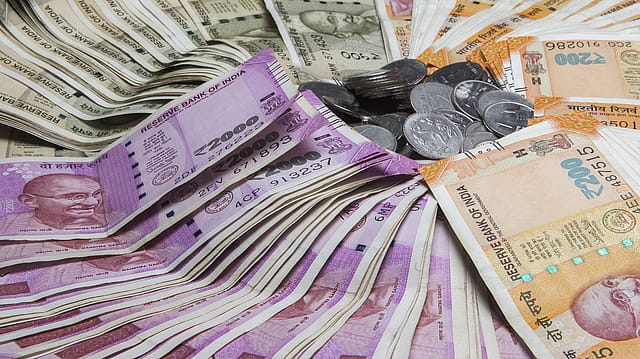Fiscal deficit to drop to 4.5% of GDP or 'lower' by FY26: Economic Survey 2024
ADVERTISEMENT

The Economic Survey 2023-24 tabled in Parliament today suggests the government continues to stick to the fiscal glide path, with the fiscal deficit expected to drop to 4.5% of GDP or lower by FY26.
The Survey says that against the global trend of widening fiscal deficit and increasing debt burden, India has remained "on the course" of fiscal consolidation. "The favourable fiscal performance in 2023, emerged as the cornerstone of India’s macroeconomic stability," it says.
Notably, the fiscal deficit of the Union government had come down from 6.4% of GDP in FY23 to 5.6% of GDP in FY24, according to data released by the Office of Controller General of Accounts (CGA).
"Strong growth in direct and indirect taxes on account of resilient economic activity and increased compliance meant that the tax revenues generated exceeded the conservative budgetary estimates. Additionally, higher-than-budgeted non-tax revenue in the form of dividends from the RBI has buffeted revenue receipts. In combination with restrained revenue expenditure, these buoyant revenues ensured lower deficits," the latest Survey says.
It says a decomposition of the fiscal deficit over the past few years reveals that with a narrowing revenue deficit, a larger share of the fiscal deficit is being accounted for by capital outlay. "This suggests that the productivity of borrowed resources has improved."
December 2025
The annual Fortune 500 India list, the definitive compendium of corporate performance, is out. This year, the cumulative revenue of the Fortune 500 India companies has breached $2 trillion for the first time. Plus, find out which are the Best B-schools in India.
Mentioning reasons behind the lowering fiscal deficit, the Economic Survey highlights that a significant fiscal consolidation post-pandemic could be achieved largely due to buoyant revenues. Revenue receipts of the union government consisting tax revenue (net to centre) and non-tax revenue (NTR) increased YoY by 14.5% in FY24 (PA), with robust growth in both tax and non-tax revenues. The growth in gross tax revenue (GTR) was estimated to be 13.4% in FY24, translating into tax revenue buoyancy of 1.4, says the Survey.
It says the efficiency of tax collection has also increased over time, which is reflected in the cost of collection of direct taxes declining from 0.66% of gross collections in FY20 to 0.51% in FY23. Additionally, they Survey the increase in indirect taxes in FY24 mainly driven by a 12.7% growth in GST collection. "GST E-way bill generated has also registered an uptick post-pandemic."
The Survey says the proceeds from the National Monetisation Pipeline (NMP), which was announced in the Union Budget FY22, are gaining traction. The NMP listed core assets of union government ministries and public sector enterprises with a potential of ₹6 lakh crore for monetisation over the four-year period of FY22-FY25. "During FY22-FY24, receipts worth ₹3.9 lakh crore have been recorded as against a target of ₹4.3 lakh crore...this will help improve capital allocation by investors while aiding the government in its pursuit of fiscal consolidation."
The Survey adds that states continued to improve their finances in FY24. "...the gross fiscal deficit of these 23 states was 8.6 per cent lower than the budgeted figure of ₹9.1 lakh crore. This implies that fiscal deficit as a per cent of GDP for these states came in at 2.8 per cent as against a budgeted 3.1 per cent. The quality of spending by state governments improved, too, with state governments focusing on capex as well."
